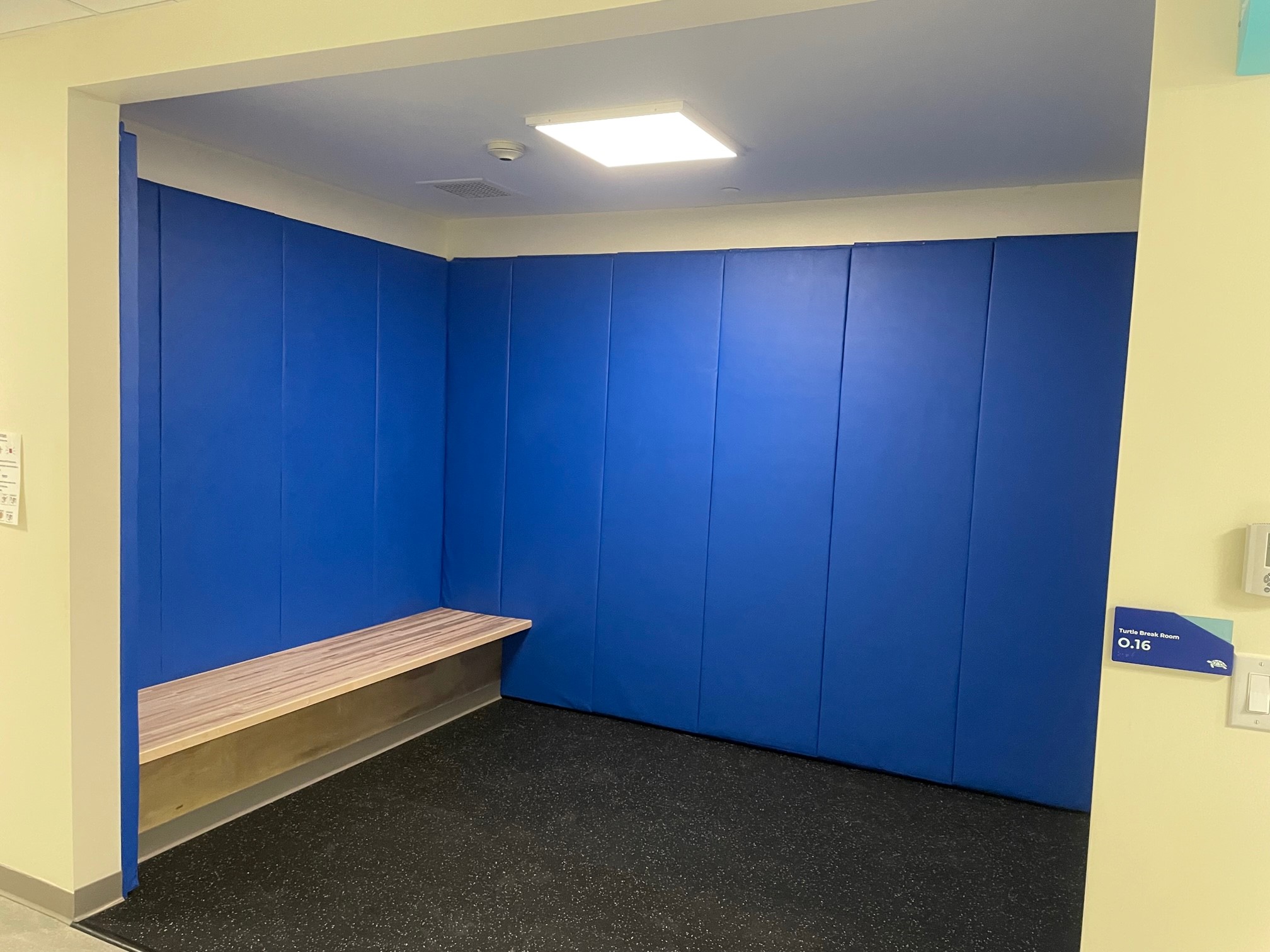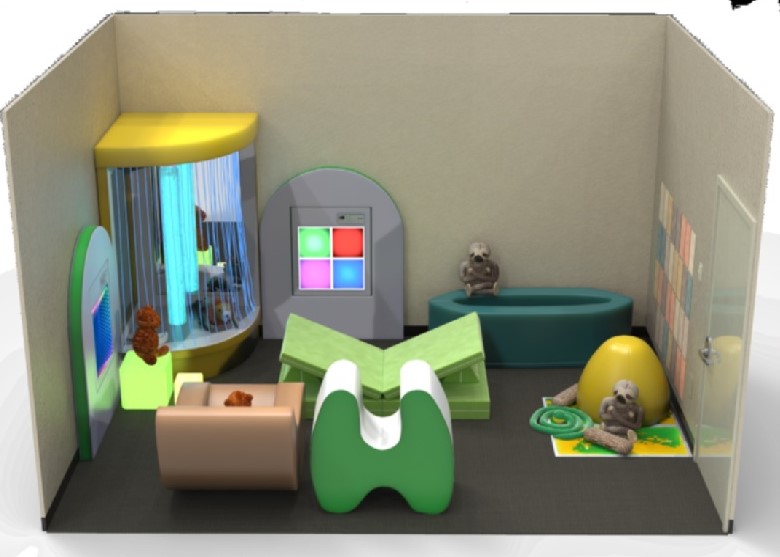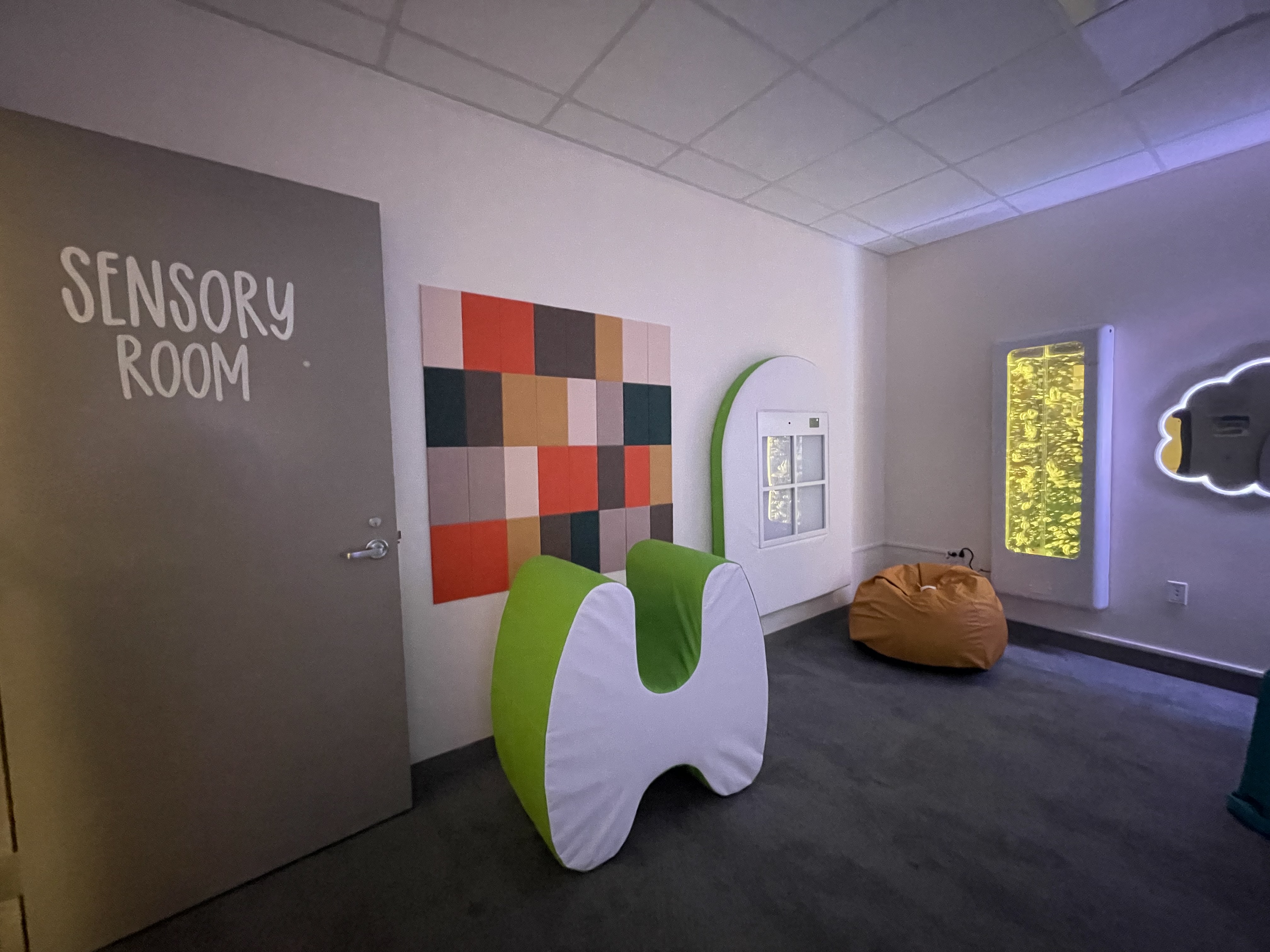For students with intellectual and developmental disabilities (IDD), access to supportive break spaces in schools is an essential part of their learning. These areas provide a quiet and structured environment where students can step away from overwhelming situations, calm their emotions, and practice self-regulation skills. Students can then return to the classroom with a renewed sense of focus and readiness. At The Guild, we understand the importance of designing these spaces to feel supportive and empowering instead of isolating or punitive.
Following updates to their statewide regulations, The Massachusetts Department of Early and Secondary Education (DESE) issued $1.5 million in grants for schools to make voluntary improvements to break rooms in 2024. The Guild School received funding to expand the number of inclusive and welcoming open spaces and enhance the overall learning environment from DESE and long-term private supporters, The Sudbury Foundation and DCU for Kids.
Annie Willis, Chief Education Officer, and a small work group of speech language practitioners, occupational therapists, and mental health clinicians reimagined the school’s break spaces and some of the common areas as part of The Guild’s focus on continuous improvement. The team developed an initial concept of how these spaces might best meet the needs of each of our students and the student body as a whole.
As the first step of this project, The Guild engaged students, staff, families, and expert vendors to guide the development of more supportive, student-centered environments. Guild School staff met directly with each youth to understand the types of spaces and sensory support they find most helpful for self-regulation. Internal experts and caregivers provided additional insights, while vendors specializing in sensory-friendly products offered recommendations for effective and developmentally appropriate tools. This approach blended professional expertise and personal experience, reinforcing The Guild’s commitment to trauma-informed, person-centered care.

Plans for improvements to the break rooms were drawn up and construction began in the late fall of 2024. Now, all six former break spaces have been renovated. In three spaces, doors were removed, square footage was expanded, and entrances were widened, transforming them into open, calming alcoves. These alcoves now offer students voluntary access to soothing spaces. The remaining three rooms were redesigned into dedicated sensory rooms with plush companions, interactive panels, compression chairs, weighted lap pads, and other calming tools.
“The sensory rooms offer fun and unique ways for a number of our students to work with staff to find their ‘just-right’ level of sensory input, that can ultimately help them improve their attention in learning environments,” said Mary Barnes and Nicole Picone, Occupational Therapists at The Guild. “When students' sensory 'systems' are becoming overwhelmed, they now can access new, safe ways to calm and soothe themselves. Collaborating with staff and students to access our sensory spaces safely, and supporting this co-regulation process, are our priorities.”
To ensure maximization of use, The Guild has provided ongoing staff training on these new spaces and tools. Once all equipment is installed, the next training phase will begin, including The Interoception Curriculum by Kelly Mahler, which teaches students to recognize bodily sensations, connect them to emotions, and use personalized strategies to regain comfort. This is especially beneficial for individuals with autism, ADHD, trauma histories, or other conditions affecting emotional regulation.

This innovative, multi-phase approach has already resulted in a reduction in injuries to both staff and students. The Guild saw a 12% reduction in reported injuries between the October-December quarter and the January-March quarter, after the construction of the new alcove spaces, as well as a 42% reduction in restraints in break rooms over the same period. Compared to the same time last year, restraints decreased by 30%, and injuries and restraints in break rooms each decreased by 56%. The Guild opened the first of three new sensory rooms in May and does not yet have data to report on its effectiveness.
Early feedback is positive. Students are using in-classroom tools and new sensory spaces to self-regulate, which reduces behavioral incidents requiring intensive interventions. Staff report a calmer school climate and stronger student-educator partnerships. The Guild is eager to track outcomes as these new spaces and supports are fully implemented.


